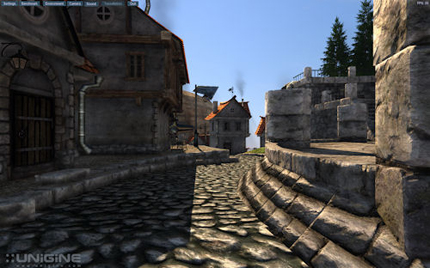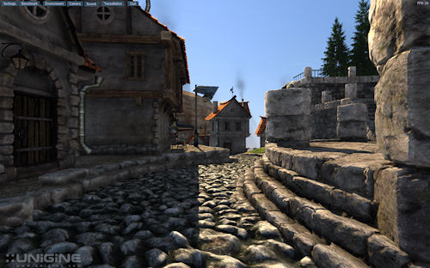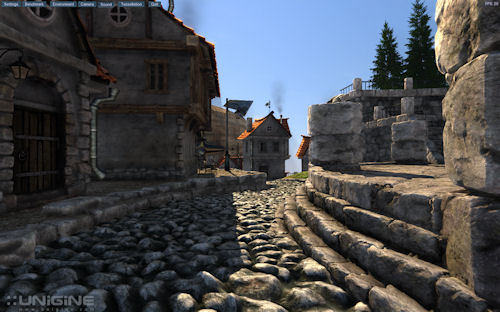Tessellate me, baby
Hardware-based tessellation is a cornerstone of DX11. The ability to efficiently generate massive geometry and then to apply what's known as a displacement map to it makes it an alluring technique for adding complexity and detail to a scene without a huge computational cost.Unigine's Heaven 2.0 benchmark tests the ability of DX11 GPUs to provide varying levels of tessellation and extra in-benchmark detail.
Here's the standard benchmark run at 1,920x1,200 with 4x AA and 16x AF. No tessellation is activated.
The scene looks good enough, right, but it could do with some extra tessellation-generated detail, so here's the same benchmark with tessellation switched to moderate.
We see a lot more geometry being used. The flagstones have depth and the steps on the right-hand side are well-defined.
The above shot shows tessellation set to 'normal'. We can't see too much of a difference between moderate and normal, can you?
The Extreme settings provides greater tessellation at a distance. See how the orange roof has greater detail?
We ran four DX11 cards through the tessellation test at each setting.
Benchmarks


The
difference between no tessellation and moderate tessellation is clear
from the screenshots. GeForce GTX 470 nips ahead of the two Radeon HD
5870s. We expect a moderate level to be used in most DX11 games.

Spice
it up and the GTX 470 begins to pull ahead, helped on by its
GPU-distributed PolyMorph geometry setup.

Even more so as the tessellation is turned up to extreme. GeForce GTX 4x0 are tessellation monsters, but the Radeons do a decent-enough job with moderate settings.













